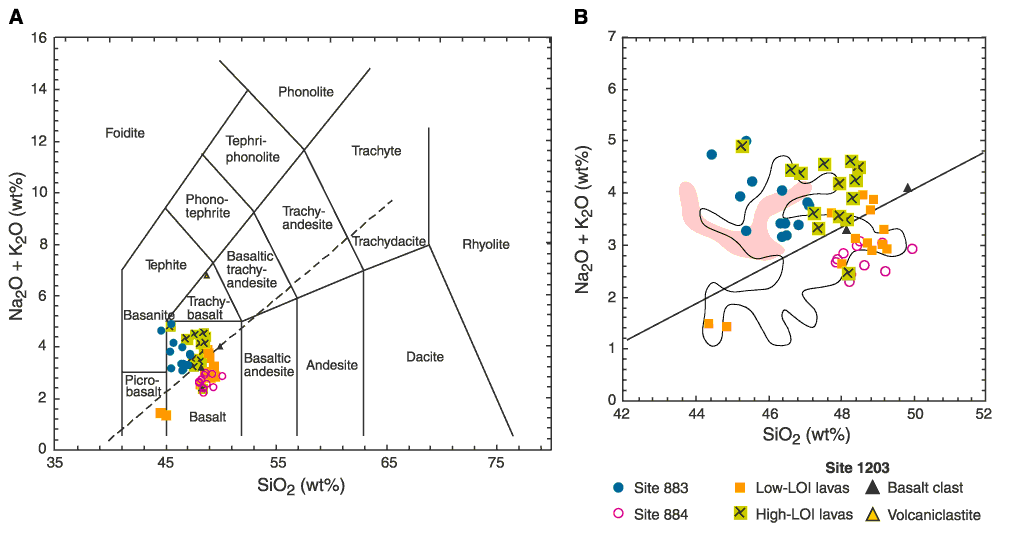
Figure F12. A.
Total alkali content (Na2O + K2O) vs. SiO2
classification plot (from Le Bas et al., 1986) for volcanic rocks showing lava
compositions from Detroit Seamount. The dashed line is the alkalic-tholeiitic
dividing line for Hawaiian basalt. Lavas from Site 884 are tholeiitic basalt,
whereas lavas from Site 883 are alkalic basalt, although Keller et al. (1995)
inferred that prior to alteration these lavas were transitional between alkalic
and tholeiitic basalt. Data for these two Leg 145 sites in this and all
subsequent figures are from Keller et al. (2000) and M. Regelous et al. (unpubl.
data). Lavas from Site 1203 range from tholeiitic, overlapping with Site 884
lavas, to alkalic, overlapping with Site 883 lavas. Most of the alkalic Site
1203 lavas have loss on ignition (LOI) >2 wt%. The volcaniclastite sample has
high total alkalis, which we interpret as a result of alkali gain during
alteration. The two Site 1203 basalt samples in the tholeiitic field at <45
wt% SiO2 are picritic as a result of olivine accumulation. B.
Total alkali content (Na2O + K2O) vs. SiO2
comparing Detroit Seamount lava compositions with those from Mauna Kea Volcano
(shield- and postshield-stage lavasólower and upper shaded areas,
respectively) on the island of Hawaii. Site 884 and some Site 1203 lavas overlap
with the shield-stage tholeiitic basalt, whereas Site 883 and some Site 1203
lavas overlap with Hawaiian postshield alkalic basalt. The irregular line
encloses postshield-stage lava erupted at Mauna Kea Volcano, Hawaii.



![]()